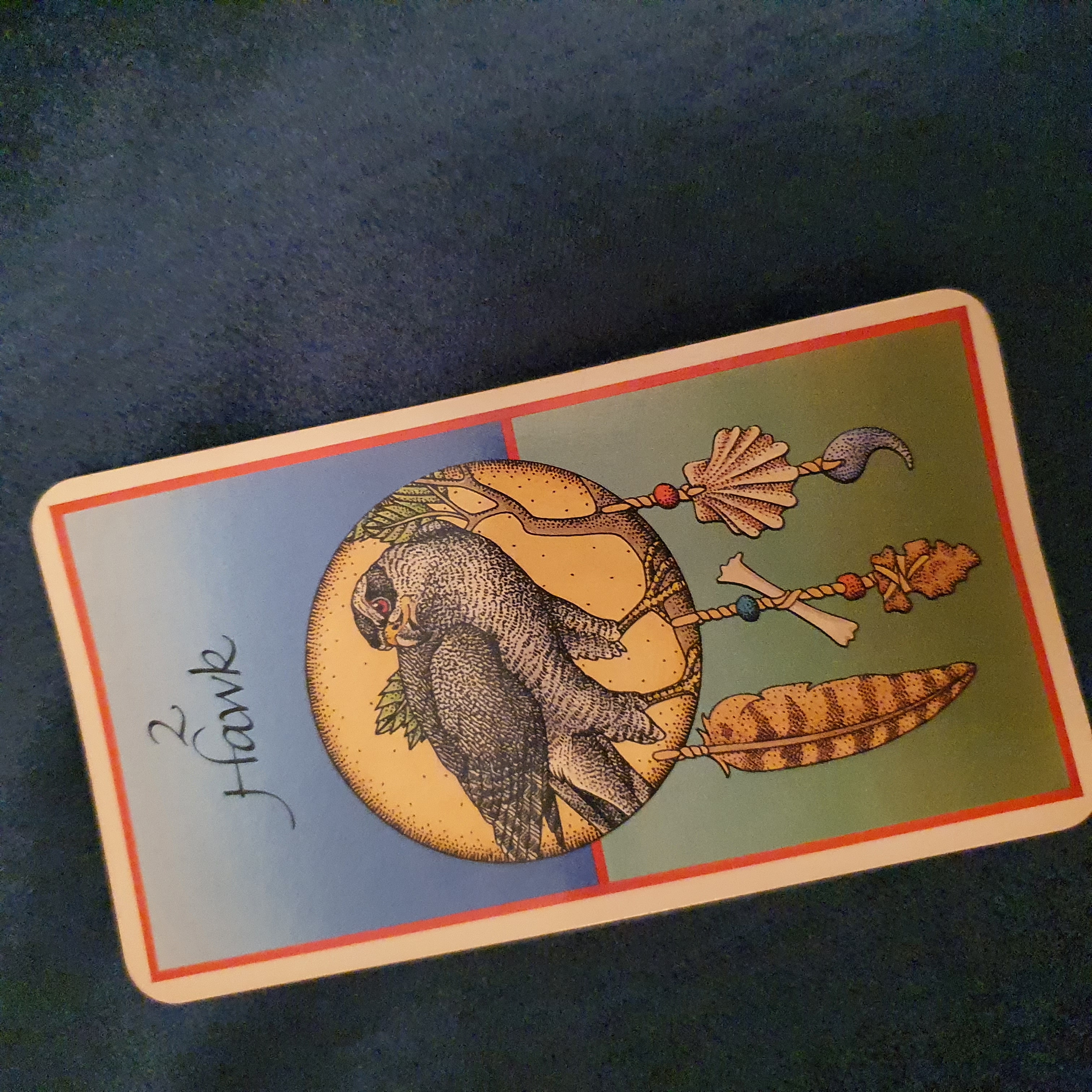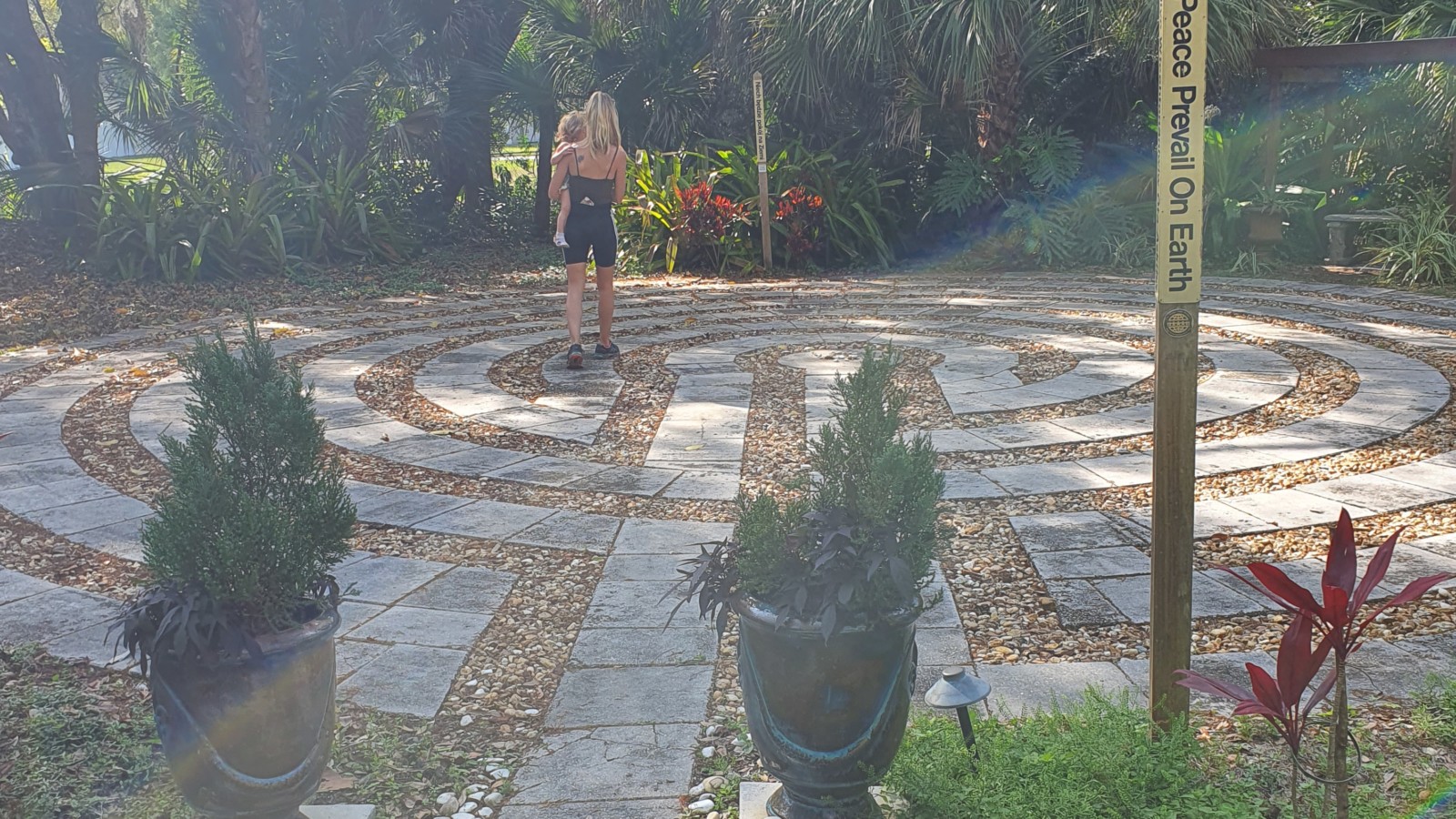It’s not like I hadn’t done labyrinths before—there was a church in upper Manhattan that had one in its transept, and one mown into the grass in Riverside Park one summer in the aughts. I’d walked them at the Omega and Kripalu Institutes and Georgetown Waterfront Park in DC. Even my cousin’s garden in North Carolina has a little one. But the labyrinth in Sarasota, Florida, behind Unity Church is the best. The pattern is very important; this one really is the best because its design—not half-and-half, not just circular or half-arcs where you turn back on yourself—does what I understand a labyrinth is meant to do: help you understand the journey inward. It is a physical manifestation of a meditation, particularly good for people who can’t sit still or need to constantly feed the mind. The physical activity engages the motor neurons, in the same way driving is meditative (or am I the only one?).
Every summer of the first several years of the last decade, I was down in Florida taking care of my mother who had fallen out of the attic onto the cement garage floor trying to take pictures of the broken air conditioner for the house trustees. The memorized Jabberwocky saved her life (that’s another story), but she did break her spine in two places, and there was additional collateral damage. Fortunately, for this situation anyway, I had just gotten a daily online columnist gig for NBC digital, so I could work from anywhere… technically. Dementia is a challenging dynamic to work with though, and I found, more and more, any kind of sustained concentration became increasingly difficult to achieve. I needed to find a way to stay centered, and meditation didn’t cut it because I was constantly interrupted. Mom had always gone to Unity, so when she was up to it, I reinstated that ritual.
The Journey

And that’s when I discovered the labyrinth. Because I knew it was “good for me,” I made a vow that I would try to get to the labyrinth every day. Usually I’d sneak out in the early morning when she was still sleeping, but sometimes she even came along if it was later in the day. (She had been a distance walker, so her muscle memory kicked in for her ability to walk again, amazing the doctors, but two of her toes went permanently numb, making the exercise of the labyrinth actually therapeutic for her.)
I admit some days were more challenging than others. On one of the stolen mornings I was hurriedly trying to get through the labyrinth, anxiety hovering around me like Pig-Pen’s cloud of dust. And then I stopped. Because in that moment I realized that it wasn’t something to get through—it was the relishing of the experience in the moment, as it was happening. I was treating the labyrinth like a chore, something to tick off the list: Spiritually centered, Check!
The Epiphany
Except I wasn’t. I had been completely missing what the labyrinth was for; and this particular design was, as I said, perfect because just when you thought you were getting close to the center, you found yourself on the outer ring, and when it seemed you were furthest away, you suddenly found yourself there, at the center! Like the spiral of life, like the spiritual journey, like what I was going through with her—sometimes short-tempered, sometimes the patience of a saint, most days some random point on that continuum.
Our journeys, whatever they may be, are rarely predictable or tameable, and certainly not linear. The labyrinth is a capsule lesson in the fact that it is the journey itself—harder to learn than it seems, but when you “get” it, it feels like the proverbial lightbulb, or a thump on the head (in a nice way); like that cloud of dust or fog we walk around in most of the time suddenly transforms into sparkly vapor before vanishing (epiphanies are hard to pin down). A huge smile transformed my face (kind of like the Grinch when his heart grew 3 sizes), and my shoulders dropped down from my earlobes. I understood the labyrinth, on a profound level.
The Sign
My ritual, when I got to the center, would be to raise my arms to the North, East, West, South (news!), honoring the directions; on that morning I did the same. But this time, when I looked up, there was a huge hawk siting silently on the branch that stretched above the labyrinth. I hadn’t heard it fly in, and it didn’t fly away. I knew from my Native American Medicine Cards that Hawk means Messenger. It was a sign, a confirmation…I had gotten the message. Saying my heart swelled with gratitude would be corny, but it’s still true.

The lesson of the labyrinth stuck. Now, whenever I walk one, whether winding or unwinding on the path, depending on my stress levels over whatever situation I am coping with at the time, a smile spontaneously breaks out on my face and I reach that place of peace and quiet joy that I found on the day of the Hawk. I walk them wherever I can find them, and always this one when I’m down visiting Sarasota.
This year, we sprung my mom from the corporate care facility where she’d ended up on the sudden lockdown last spring (along with me for a week, but that’s another story), and moved her back home. I visited the labyrinth every day I was there. On the last day I took her with me, and told her the story of the Hawk. But she elected to stay in the car.
So I did the labyrinth alone. I had never had a visitation or a sign again, and I accepted that… after a while. I had had my special experience and it was enough. I do them with no expectation, just the experience of the present moment on the journey, both inward and outward. But when I got to the center this time and looked up to honor the directions, a huge Hawk appeared out of nowhere and soared towards the labyrinth, did a circle high in the sky above me, then flew back the way it came and disappeared.
Tears freckled my cheeks; it seemed like a cycle of completion, like a warm hug from a breeze or a pat on the back or … a sign. A line from a Lao Tzu quote I keep on my fridge bubbled up, “Not seeking, not expecting, she is present, and can welcome all things.”


